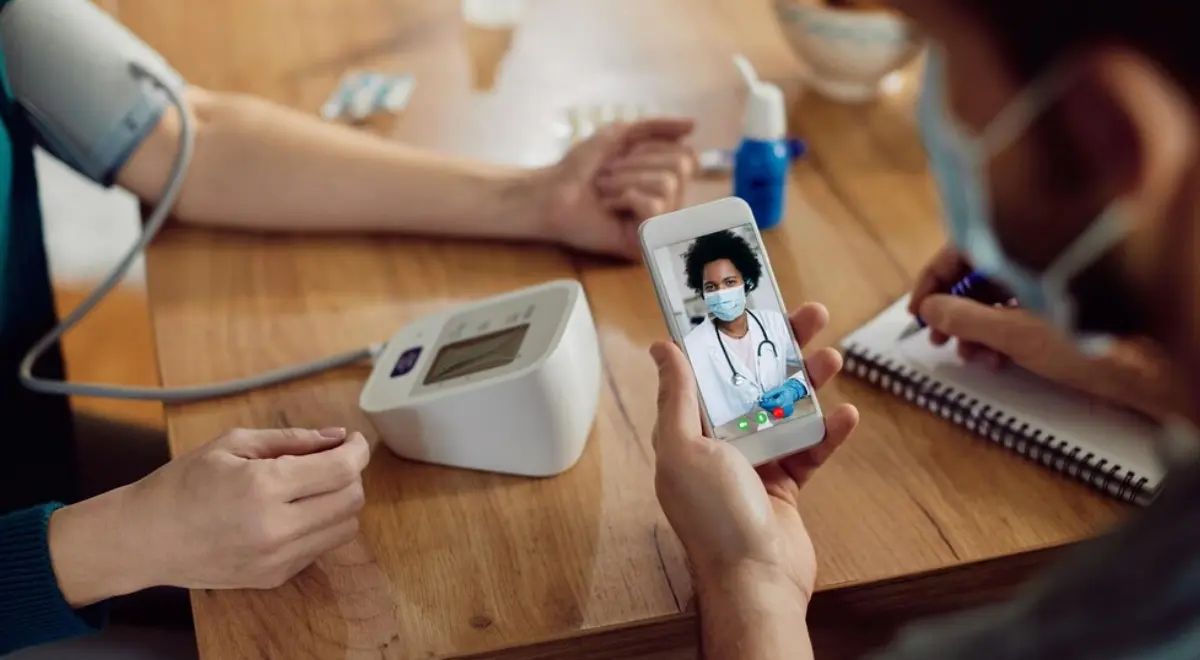Importance of Remote Patient Monitoring (RPM) During Flu Season

With flu season approaching, monitoring your health to prevent illness is crucial. Remote Patient Monitoring (RPM) is the latest advancement in the healthcare technology that is playing a significant role in improving the clinical outcomes for chronic patients.
Since the fall is here, health concerns related to cold weather, such as the flu, influenza, and other respiratory ailments, are on the rise. Catching seasonal flu or respiratory infections can worsen chronic conditions such as congestive heart failure, hypertension, chronic obstructive pulmonary disease, and diabetes. RPM, through continuous monitoring, enables preventative measures to avoid falling ill.
Table of Contents
ToggleHow RPM For Flu Works?
Remote patient monitoring streamlines patient care and improves health outcomes outside traditional healthcare settings. A patient checks his/her vitals, such as heart rate, blood pressure, weight, and oxygen saturation via remote monitoring devices.
These readings are automatically transmitted to the RPM software platform, where a healthcare provider observes any abnormalities/ fluctuations in the vitals, analyzes patient’s symptoms, and tailors a personalized treatment plan after scheduling a virtual consultation with the patient.
To avoid the burden on healthcare providers, remote patient monitoring focuses on:
- Targeted Monitoring for Respiratory infections: RPM’s capacity to monitor critical health indicators such as oxygen saturation and respiratory rate is very useful in controlling respiratory infections. This can lead to early diagnosis of deteriorating conditions in chronic patients with influenza, COVID-19, or RSV, allowing for timely interventions. By tracking the patient’s vitals continuously, healthcare providers can make early interventions, thereby lowering the need for emergency care.
- Care Coordination for Flu Patients: Since RPM allows daily health recording, it helps physicians assess the patient’s reports anytime and identify any abnormal variations. With continuous monitoring, physicians can make the required adjustments to the treatment plan to accommodate flu medication and care. RPM promotes care coordination thereby improving the management of seasonal flu, influenza, and other respiratory illnesses.
Benefits of RPM In Diagnosing & Managing Flu
Remote Patient Monitoring offers a number of benefits to both patients and providers. For ex: it minimizes the communication gap between healthcare providers and patients and helps make timely interventions to avoid emergency hospital visits. Some of its other benefits in terms of flu treatment and prevention include:
- Reduces Unnecessary Contact for Patients: Since flu weakens the body’s strength and immune system, patients with flu are at risk of getting other infections by coming in contact with infected patients at a doctor’s clinic. RPM allows patients to have virtual consultations from the comfort of their own homes, minimizing the risk of exposure to infections.
- Saves Time, Money, & Travel Hassles: With RPM, flu patients need not step outside their home for doctor appointments, time, money, and hassles related to travel from home to the doctor’s clinic get significantly reduced. There’s no need to wait for hours to get yourself assessed by a doctor as RPM reduces the waiting time with its round the clock monitoring and appointment scheduling ability.
- Reduces Stress & Anxiety in Patients: A crowded hospital waiting room with patients suffering from seasonal flu and the stress that comes with it can affect a patient’s mental health. Also, there may be a chance that a patient may not receive his/her consultations on time, making them feel more stressed and anxious. Remote patient monitoring can keep all these issues at bay and gives the patient peace of mind and relaxation of being monitored from their home.
- Reduces the Resources Spent on Each Patient: Since RPM deals with patient monitoring in a remote setting, providers need not have to account for the expenditures of having patients visit the clinic physically. This means the nurses will not have to spend time recording the infection history of each flu patient, the hospital will not have to add more resources to handle the consultation, and will be able to accommodate more patients.
- Allows Connecting With Specialists: Patients who reside in remote places may find it difficult to reach qualified doctors or specialists who can monitor their condition and provide the best treatment possible. RPM allows patients to communicate with the specialists for their condition without having to travel far-off.
Monitor Flu Patients With HealthArc’s Advanced RPM Platform
An advanced RPM platform offers substantial benefits for managing patient health while alleviating strain on healthcare systems. The Centers for Medicare & Medicaid Services (CMS) have recognized RPM’s value and has facilitated the broader adoption of RPM by expanding its scope beyond traditional monitoring. By allowing healthcare providers to monitor and manage patients remotely, RPM effectively reduces the pressure associated with flu when minimizing contact is essential.
HealthArc helps practices connect to their patients and offers seamless integration with all leading EHRs through HL7 and FHIR capabilities. Healthcare providers can conveniently communicate with patients via audio, video calls, and SMS to make timely interventions.
Schedule a free demo today or call us at (201) 885 5571 to find out how our digital health platform can help you monitor your patient’s flu symptoms and enhance care coordination.
Most recent blogs
Categories
- Advanced Primary Care Management
- Behavioral Health Integration
- Cellular Remote Patient Monitoring
- Chronic Care Management
- Chronic Care Management Billing
- Chronic Care Management CPT Codes
- Chronic Care Management Program
- Chronic Care Management Software
- Digital Health Platform
- Principal Care Management
- Principal Care Management CPT Codes
- Remote Care Programs
- Remote Monitoring Devices
- Remote Patient Care
- Remote Patient Monitoring
- Remote Patient Monitoring Billing
- Remote Patient Monitoring CPT Codes
- Remote Patient Monitoring Devices
- Remote Patient Software
- Remote Therapeutic Monitoring
- Remote Therapeutic Monitoring Billing
- Remote Therapeutic Monitoring CPT Codes
- Telemedicine & RPM
- Transitional Care Management
- Transitional Care Management Billing
- Transitional Care Management CPT Codes
Related Posts
- February 21, 2025 | Read Time: 5 mins
RPM’s Role in Identifying Early Symptoms of Chronic Conditions for Prevention
- February 14, 2025 | Read Time: 4 mins
Monitoring Post-Surgical Recovery With RPM Systems
- February 10, 2025 | Read Time: 5 mins






